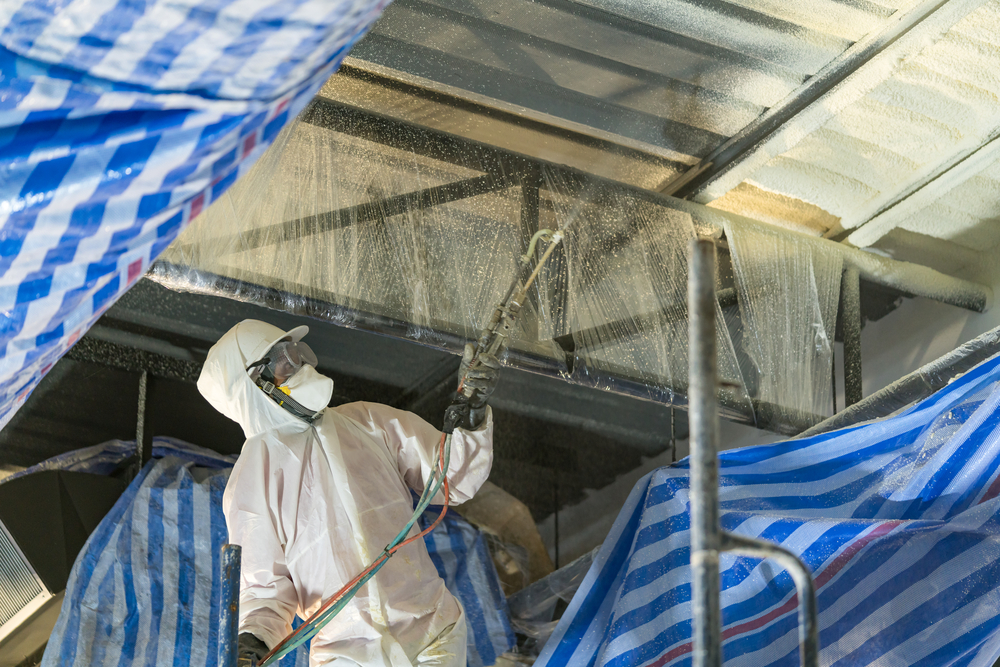Spray foam is an insulation material that’s primarily used on residential buildings. It is popular because of its energy efficiency and durability. If you own a metal building, you may be wondering whether or not spray foam is good for your building.
In this blog, we’re going to dive into the best uses for spray foam and how it can help your metal building.
Applications of SPF in Interior Metal Building Assemblies
SPF is an excellent choice for metal panel assemblies. Single-skin metal building assemblies are long-lasting building envelope components, however, they provide no insulation. Other products can insulate metal skins, but they frequently fail to insulate structural components like beams, rafters, purlins, and girts. Continuous air barriers, vapor retarders, and insulation are required to address this. SPF is the only product that can deliver all of these barriers in one application.
SPF acts as a thermal, air, moisture, and sound barrier, improving the structure’s interior comfort. These barriers guard against condensation and water damage, keep internal temperatures and humidity stable for much lower energy costs, and decrease the number of allergens and pollutants that can enter the structure—a real benefit for allergy sufferers.
Proper Installation of Foam

While the benefits of SPF are numerous, they are maximized when the product is installed safely and properly. Due to the fact that SPF is created on-site during installation, certain standards and procedures are required to optimize product performance and protect the safety of installers and facility users.
Equipment Maintenance: It is critical to maintain professional SPF installation equipment to ensure safety, accurate installation, and optimal effectiveness of SPF. It is critical to do routine inspections, cleaning, repair, storage, and maintenance. Contractors should keep spare parts on hand in each rig to minimize downtime in the event of equipment failure during installation.
Maintain Proper Temperatures: To guarantee shelf life and application performance, spray foam chemicals must always be stored within the manufacturer’s recommended temperature range. During installation, the equipment should be set to the manufacturer’s suggested temperatures and pressures in order to get optimal SPF. Additionally, the substrate, ambient, and relative humidity levels must be monitored.
SPF precautions: SPF is created on the job site by combining equal proportions of two liquid components. Polymeric isocyanates (or pMDI) are used in the A component, whereas the B component is a proprietary blend of polyols, blowing agents, catalysts, flame retardants, and surfactants. Typically, manufacturers of high-pressure SPF supply sets of A- and B-components in 55-gallon barrels.
SPF Products Selection: A variety of SPF products are available in a variety of densities, each with a unique set of performance qualities such as moisture resistance, R-value, and structural properties. Closed-cell foam is commonly utilized in metal buildings due to its moisture control and structural features.
Preparation and priming: Priming the substrate surface may be necessary for some SPF insulation installations, particularly when applying foam to metal surfaces, as primers can significantly improve adhesion between the SPF and metal substrates. SPFA has produced a guidance document, AY-143 “Primers: Why, When, and How to Use Them,” on the selection and use of primers for SPF. Prior to and during the application, it is necessary to check the foam’s adherence.
Protective Coatings and Coverings: To offer code-compliant fire protection, SPF insulation must be separated from the interior area by an approved 15-minute thermal barrier. While 1/2-inch gypsum in the walls and ceilings and 3/4-inch plywood in the flooring meet this requirement prescriptively, additional applications of foam may require the use of an approved thermal barrier covering or coating. Additionally, in attics with restricted access, an ignition barrier coating over the foam may be required. In their product evaluation reports, manufacturers include a list of suitable fire protection coatings.
Contact us today to learn if SPF insulation is right for you or you need a different type of insulation for your metal building.

